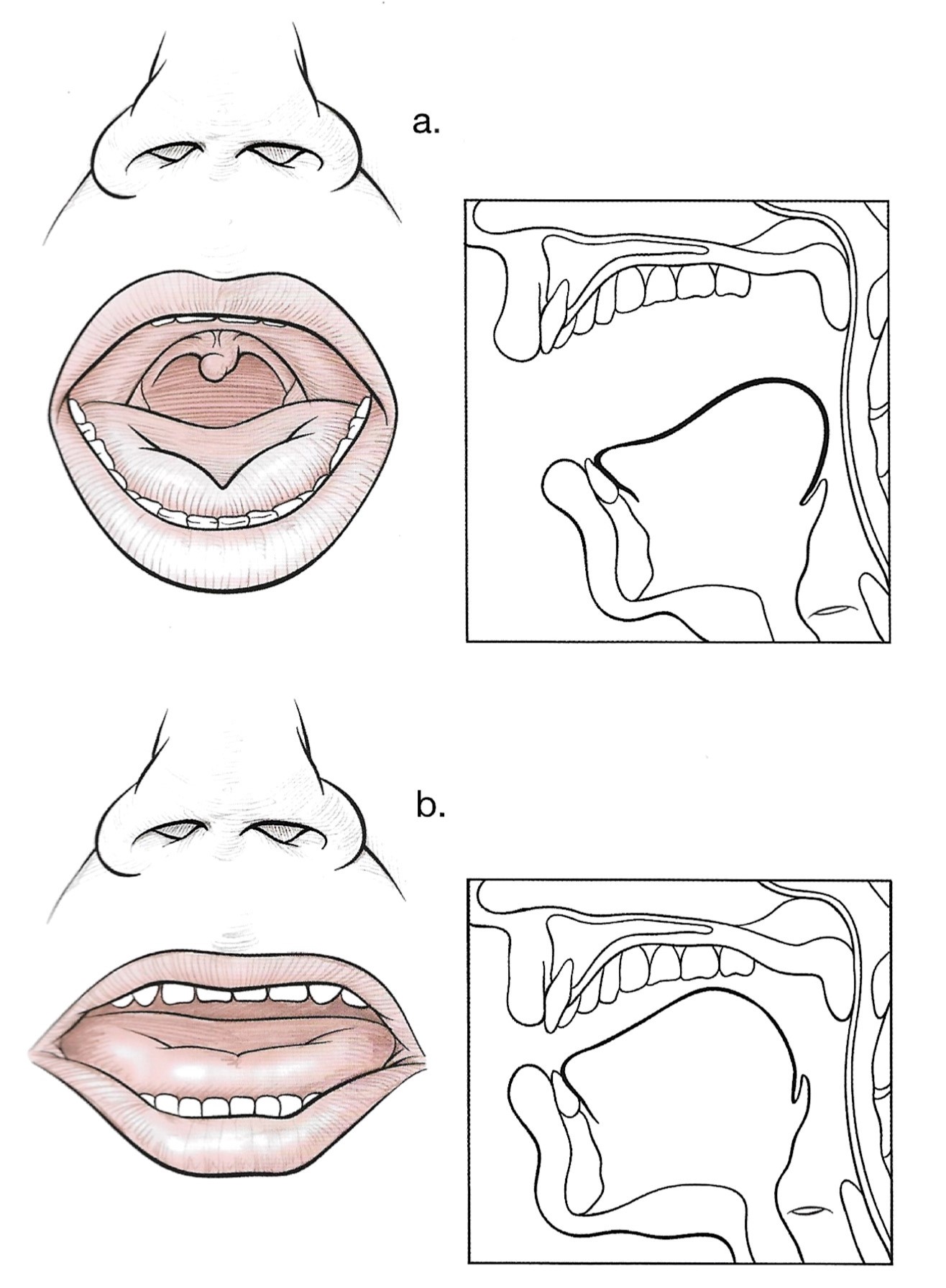Podemos dividir o palato em duas secções, o palato duro e o palato mole. O palato duro no fundo é o céu da boca, e é o que nos permite mastigar e ao mesmo tempo respirar pelo nariz.
O palato mole estende-se até à garganta (onde se encontra a úvula) e move-se. Juntamente com a língua por exemplo quando estamos a nadar é capaz de selar a entrada de água e do ar pela boca ou nariz.

Quando estamos a engolir os alimentos o palato mole encontra-se elevado contra a faringe para fechar a cavidade nasal.
Existem vários músculos, para ser mais precisa cinco, responsáveis pelo movimento do palato mole.
“Levator veli palatini is a thick muscle (…) Its function is to move the soft palate upward and backward, closing the velopharyngeal valve or nasal port. When we yawn or deepen the voice, which raises the palate, it is this muscle that comes into play – a crucial one for voice users.”
Cantar exige que o palato esteja arqueado e levantado. Isso não acontece quando a garganta está tensa a língua está numa posição elevada e o queixo também tem tendência a estar um pouco fechado.
“A great many singers suffer the defect called “throatiness” of the emission that is to say , they attack or start the note in the throat. Sooner or later this attack will ruin the most beautiful voice. As I have said before, the attack of the note most come from the apoggio, or breath prop. But to have the attack pure and perfectly in tune you must have the throat entirely open, for i its useless to try to sing if the throat is not sufficiently open to let the sound pass freely. Throaty tones or pinched tones are tones which are trying to force themselves through a half-closed throat blocked either by insufficient opening of the larynx or by stopgap of the throat passage, due to the root of the tongue being forced down and back too hard or possibly to a low, soft palate.”
O oposto acontece quando o palato está elevado a língua o osso hioide a laringe estão numa posição baixa o que permite abrir a garganta. Por exemplo quando estamos no início de um bocejo. Com alguns exercícios é possível induzir o movimento destes músculos que permitem manter o palato mole elevado.
Arquear o palato é crucial para moldar o som cantado, ao arquear o palato conseguimos ligar a cavidade oral à faringe fazendo delas uma cavidade de ressonância unificada.
“The “throaty” voice comes from singing with the throat insufficiently opened, so that the breath does not pass easily through the nose and head cavities and, again from not attacking the tone deeply enough.
To cure oneself of this throaty quality attack your notes from the abdomen, the mouth well open, standing in the front of a mirror. The force of the respiration will keep the tongue depressed and the throat will remain free.”
Cantar com a garganta é considerado um problema (defeito) no Canto, pois isso demonstra que o apoio (respiração), a pressão do ar é insuficiente ou utilizada de forma ineficiente para o Canto. Assim, esta falta de energia faz-nos construindo tensão nos músculos à volta da laringe e por aí acima fechando a garganta mantendo a língua elevada o palato mole baixo e o queixo trancado. O que resulta daí, é no fundo, um grito e não um som suspenso que é o nós produzimos a cantar.

“Most people envision singing as something that starts in your throat and comes out of your mouth. That is a very limiting idea and forces your throat to work MUCH too hard. From no won think of singing as a “whole body” event and work to keep the tone out of your throat. I find it helpful to imagine the sound is coming up the back of my spine and neck, and then moving out through my face masque.”
Gallinger, Karen – The Zen of Singing: Freeing Your True Voice. 2006.
No artigo de articulação encontra alguns exercícios relacionados com o palato mole e que lhe permitem abrir a garganta.
O vídeo abaixo contém uma explicação detalhada do que é o ‘Palato’ e, exercícios para perceber como aciona este mecanismo tão importante para os cantores.
